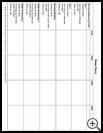
Sleep: Phasing Out Nighttime Feedings
The first weeks with a newborn are extremely demanding. You need to feed your baby every 1 and 1/2 to 3 hours. Her voracious appetite makes any schedule impossible. You'll be up for feedings at least twice each night. However, when your baby reaches 1 month old, you can start to shape her feeding behaviors.
How can I help my baby give up middle-of-the-night feedings?
- After your baby is 2 weeks old and your milk supply is in, don't feed your baby more often than every 2 hours. More frequent daytime feedings (such as hourly) lead to frequent awakenings at night. For every time you nurse your baby, there should be 4 or 5 times that you snuggle your baby without nursing. Don't let her get into the bad habit of nursing every time she fusses (called comfort nursing).
- Put your baby in the crib drowsy but partially awake. Her last waking memory needs to be of the crib, not of the breast or bottle. Once she learns how to put herself back to sleep, she will not cry after normal awakenings. She will cry at night only if she's hungry, sick, or uncomfortable.
- Make middle-of-the-night feedings brief and boring. Don't turn on the lights or talk to your baby. Feed your child quickly and quietly. During the day you can provide extra rocking and playtime.
- Take naps during the day when your baby is napping. This will help you survive the nighttime demands. You may need to lower your housekeeping standards.
With this approach and a little luck, your bottle-fed baby will give up middle-of-the-night feedings between 2 and 4 months of age. Your breast-fed baby will do the same between 4 and 6 months of age.
Written by Barton D. Schmitt, MD, author of “My Child Is Sick,” American Academy of Pediatrics Books.
Pediatric Advisor 2018.1 published by Change Healthcare.
Last modified: 2012-05-15
Last reviewed: 2016-06-01
Last modified: 2012-05-15
Last reviewed: 2016-06-01
This content is reviewed periodically and is subject to change as new health information becomes available. The information is intended to inform and educate and is not a replacement for medical evaluation, advice, diagnosis or treatment by a healthcare professional.
Copyright ©1986-2018 Barton D. Schmitt, MD FAAP. All rights reserved.

